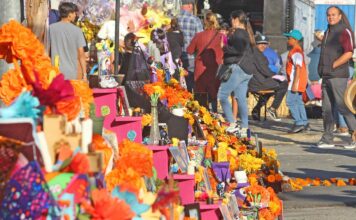With extending its parcel tax in mind, the Santa Clara Valley Water District surveyed voters in the county to find that more than half want to see the tax continue – not a surprise to Director Don Gage, however.
“You have to understand that water is a precious commodity. If you run out of it, you have a problem,” Gage said. “We saved over 90,000 properties as a result of the Safe, Clean Creeks, we still have 60,000 to go. Because (the parcel tax) is a continuation, they’re used to paying for it and see the benefit of it.”
Part of the “Safe, Clean Water and Natural Flood Protection” program, the water district surveyed 800 Santa Clara County voters by phone, concluding their five-day, 19-question survey last month. At last week’s water district meeting, results presented to the board revealed that the majority of voters surveyed want to continue the already-in-place $54 parcel tax which is currently under the “Clean Safe Creeks and Natural Flood” protection set to expire in 2016.
Of the 800 surveyed, 46 respondents were from South County.
The new Safe, Clean Water program would mostly be a continuation of the previous plan, including flood protection services and stream stewardship, yet it would also pay for a portion of the $45 million Anderson Dam seismic retrofit project. Anderson Dam, in east Morgan Hill, was deemed unsafe after a study concluded in July 2011 that a earthquake magnitude 7.2 or higher could flood Gilroy and put Morgan Hill underwater within roughly 15 minutes.
A total of 63 percent of those surveyed said “yes” to the question “If the election were today, would you vote ‘yes’ in approve or ‘no’ to reject the measure” to continuing the parcel tax, which is currently an average of $52.64 per parcel. When asked about a continuation and reduction of the price per parcel, 55 percent said yes.
“The straight continuation of the existing parcel tax would mean renewing the existing voter-approved local funding with no increase or decrease in the tax rates,” said Rich Callender, government relations manager for the water district.
The rate would be $54, said Callender, when and if it goes into effect. It would still include a low-income senior exemption, which is adjusted annually.
After hearing comments from the board of directors, a more finalized plan will be presented to the board at the March 27 meeting, with plans to adopt it that same meeting. The board will decide this summer whether or not to include the plan to place the measure on the November 2012 ballot.
The Clean Safe Creeks and Natural Flood Protection Plan passed in November 2000 by two-thirds majority vote has amounted to more than $327 million in revenue through fiscal year 2011, according to a independent oversight committee report that came out in January.
After surveyors included more background information in the survey, the results were even: 65 percent said yes for a continuation only, while 65 percent support a continuation and reduction.
Voters preferred a straight continuation, when given the choice between two phrases: 1) “Continuing the parcel tax at its existing rate in order to fund the same kinds of projects and programs that the tax currently pays for” or 2) “Reducing the parcel tax by 12 percent and funding fewer projects and programs than the current tax pays for.”
Results revealed that 59 percent preferred answer one on continuing the existing rate, while 29 percent preferred answer two.
Of those that supported the continuation, the difference if the project would sunset at 15 years or 19 years was minimal: 33 percent preferred 15 years, 25 percent preferred 19 years.
Phone interviews were conducted in English, Spanish and Vietnamese and cost the district a total of $27,250.
San Martin resident Bob Cerruti took aim at the water district, who he’s critiqued for years for over spending at its San Jose headquarters and over charging for water. He plans to speak at the March 27 meeting on the topic.
“How many of those 800 people were from South County? Because if they were from the north portion, those people love to get taxed,” he said.
Back in 2009, the water district experienced criticism from a Santa Clara County Grand Jury report that said it lacked accountability and made little effort to become more transparent or cost effective. It recommended at the time that the agency establish an independent public review committee to oversee the board of directors who had ignored previous audits and investigations.
Proposed plan changes based on this survey and others include increasing the funding to “Ensure a safe, reliable water supply for the future” from $1.7 million to $10 million, remove the invasive mussel program from the Safe, Clean Water Partnerships and Grants and increase the allocated funding for the Anderson Dam Retrofit project from $2 million to $45 million.
The water district provides water supply and flood protection to Santa Clara County’s 1.8 million people with a budget of $312.6 million.
If the Safe Clean Water and Natural Flood Protection plan is put on the ballot for Nov. 2012, it would:
– Ensure a safe, reliable water supply
– Reduce toxins and contaminants in our water system
– Protect water supply from earthquakes and natural disasters
– Restore wildlife habitat and provide open space access
– Provide natural flood protect
Cost will be about $54 per parcel. This year, the parcel tax through the Clean Safe Creeks and Natural Flood Protection plan’s estimated revenue is $38.8 million.
Source: SCVWD














